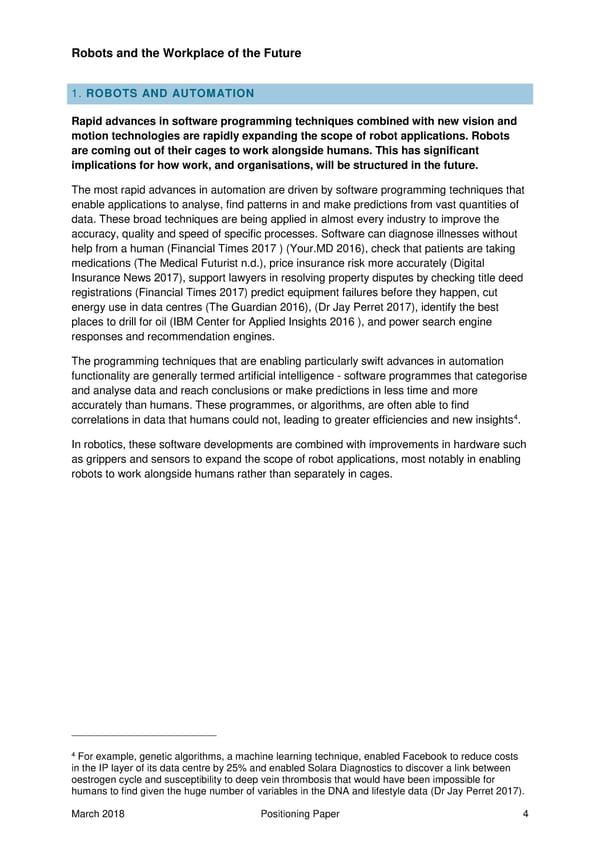Robots and the Workplace of the Future 1. ROBOTS AND AUTOMATION Rapid advances in software programming techniques combined with new vision and motion technologies are rapidly expanding the scope of robot applications. Robots are coming out of their cages to work alongside humans. This has significant implications for how work, and organisations, will be structured in the future. The most rapid advances in automation are driven by software programming techniques that enable applications to analyse, find patterns in and make predictions from vast quantities of data. These broad techniques are being applied in almost every industry to improve the accuracy, quality and speed of specific processes. Software can diagnose illnesses without help from a human (Financial Times 2017 ) (Your.MD 2016), check that patients are taking medications (The Medical Futurist n.d.), price insurance risk more accurately (Digital Insurance News 2017), support lawyers in resolving property disputes by checking title deed registrations (Financial Times 2017) predict equipment failures before they happen, cut energy use in data centres (The Guardian 2016), (Dr Jay Perret 2017), identify the best places to drill for oil (IBM Center for Applied Insights 2016 ), and power search engine responses and recommendation engines. The programming techniques that are enabling particularly swift advances in automation functionality are generally termed artificial intelligence - software programmes that categorise and analyse data and reach conclusions or make predictions in less time and more accurately than humans. These programmes, or algorithms, are often able to find correlations in data that humans could not, leading to greater efficiencies and new insights4 . In robotics, these software developments are combined with improvements in hardware such as grippers and sensors to expand the scope of robot applications, most notably in enabling robots to work alongside humans rather than separately in cages. 4 For example, genetic algorithms, a machine learning technique, enabled Facebook to reduce costs in the IP layer of its data centre by 25% and enabled Solara Diagnostics to discover a link between oestrogen cycle and susceptibility to deep vein thrombosis that would have been impossible for humans to find given the huge number of variables in the DNA and lifestyle data (Dr Jay Perret 2017). March 2018 Positioning Paper 4
 Robots & the Workplace of the Future Page 4 Page 6
Robots & the Workplace of the Future Page 4 Page 6